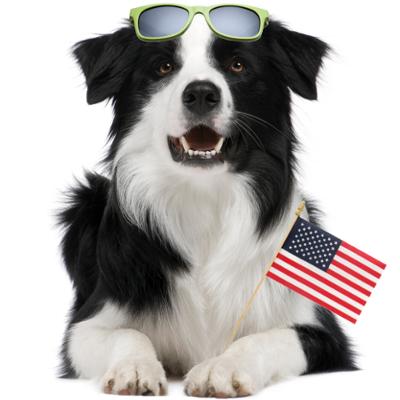By Elizabeth Wasserman for The Dog Daily
 In the White House, they play howl to the chief. They are presidential dogs -- the most common presidential pets. Throughout history, U.S. presidents have had faithful companions living with them at 1600 Pennsylvania Avenue. White House dogs have comforted their owners in times of great national stress, entertained the American public with their antics and done all of the things a normal dog will do -- often in the media spotlight.
In the White House, they play howl to the chief. They are presidential dogs -- the most common presidential pets. Throughout history, U.S. presidents have had faithful companions living with them at 1600 Pennsylvania Avenue. White House dogs have comforted their owners in times of great national stress, entertained the American public with their antics and done all of the things a normal dog will do -- often in the media spotlight.
“Every president that has a pet seems to be better-liked by the public,” says Claire McLean, founder of the Presidential Pet Museum, which contains a collection of photographs and memorabilia located at Presidents Park in Williamsburg, Va. “The dog-loving public seems to feel that they are much more real and down-to-earth if they have the same type of behavior as the average family.” That includes having to take the dog for a walk.
While most presidential dogs have been deemed a political asset, others have left a legacy of misbehavior. Pet owners nationwide may take comfort in knowing that even first families sometimes have pets with behavior problems, or unknowingly pick the wrong breed for their lifestyle. Some presidential dogs have even been put out to pasture, by being returned to their previous owners or sent to spend the waning days of the administration on the presidential ranch. Here are some stories about presidential pet misdeeds and what experts advise if you encounter similar behavior:
Grits: The Dog Who Snapped at People
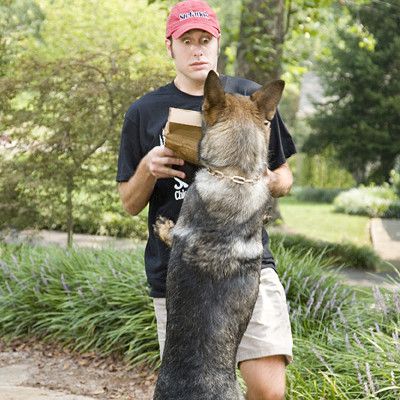 When Jimmy Carter moved his family from Georgia to Washington, D.C., after his election in 1976, his young daughter Amy was given a mixed breed dog by her former teacher. Amy named the dog Grits, after her father’s campaign slogan, referring to himself and Vice President Walter “Fritz” Mondale as “Grits and Fritz.”
When Jimmy Carter moved his family from Georgia to Washington, D.C., after his election in 1976, his young daughter Amy was given a mixed breed dog by her former teacher. Amy named the dog Grits, after her father’s campaign slogan, referring to himself and Vice President Walter “Fritz” Mondale as “Grits and Fritz.”
“It was a very belligerent dog,” McLean says. “It snapped at people and wasn’t very friendly.” Grits followed a long line of biting dogs in the White House, which included one of Franklin D. Roosevelt’s terriers, Meggie, who once bit a senator. Pete, a bull terrier belonging to the other Roosevelt who occupied the White House -- Teddy -- nearly caused an international incident when he ripped off the French ambassador’s slacks during a function. Grits ended up in the doghouse, too, figuratively speaking, and was returned. The Carters then adopted a cat.
What You Can Learn from Grits about Biting
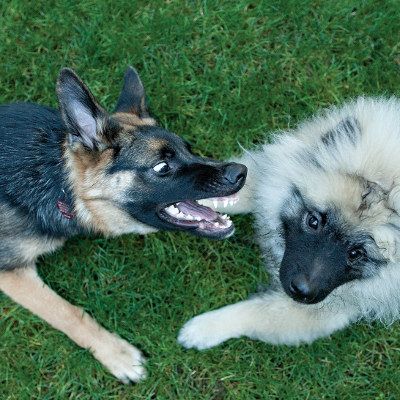 Aggressive behavior, such as snapping, biting or snarling, is hard for dog owners to tolerate. There are many reasons why canines exhibit such aggressive behavior -- in response to fear, to protect territory or as a result of a change in the dog’s social status. The Humane Society of the U.S. advises that pet owners get help from an animal behavior specialist to deal with aggression.
Aggressive behavior, such as snapping, biting or snarling, is hard for dog owners to tolerate. There are many reasons why canines exhibit such aggressive behavior -- in response to fear, to protect territory or as a result of a change in the dog’s social status. The Humane Society of the U.S. advises that pet owners get help from an animal behavior specialist to deal with aggression.
Socialization is also key. “The best thing to do is start early. A lot of these dogs are received as puppies,” says Trish McMillan, director of animal behavior. “You only have the first 4 months of a puppy’s life, for the window of socialization, to introduce them to new things. I’m betting that some of these presidents’ dogs were not socialized enough as puppies.”
Lucky: The Dog Who Pulled
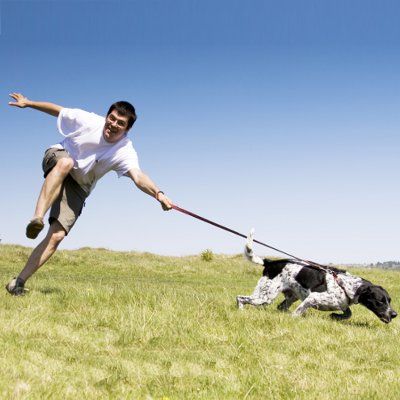 After Ronald Reagan’s first term as president, a March of Dimes poster girl gave his wife, Nancy, a small puppy. The first lady named the dog -- which was a Bouvier des Flanders, or Belgian Cattle dog -- Lucky. “She was just a little bundle of fur when I got her,” Mrs. Reagan wrote in her autobiography, “but she grew to be the size of a pony.” Lucky developed poor leash walking habits. The dog “used to pull them both around the White House,” McLean says.
After Ronald Reagan’s first term as president, a March of Dimes poster girl gave his wife, Nancy, a small puppy. The first lady named the dog -- which was a Bouvier des Flanders, or Belgian Cattle dog -- Lucky. “She was just a little bundle of fur when I got her,” Mrs. Reagan wrote in her autobiography, “but she grew to be the size of a pony.” Lucky developed poor leash walking habits. The dog “used to pull them both around the White House,” McLean says.
The final straw came after a White House visit by British Prime Minister Margaret Thatcher, when President Reagan was photographed being pulled across the White House lawn -- an undignified image for the leader of the free world. Lucky was sent to live on the Reagan ranch in California, leaving Rex, a Cavalier King Charles Spaniel, as the only pup in the White House.
What You Can Learn from Lucky about Pulling
Pulling on the leash may be indicative of other problems, such as a dog that is not getting enough exercise. That is especially true of dogs that are bred for herding, farm work, or other activities. The Reagans may have erred in thinking that Lucky could adapt to the more sedate lifestyle in the White House, but clearly found a better environment for the dog on a ranch later in life. If you don’t have a spare ranch, experts advise two options.
First, you can train the dog. “The easiest way is to feed the dog meals on the walk,” McMillan says. “Have a bag of kibble in your pocket. Every time they pull on the leash, turn to your left when they’re on your right. But every time they walk nicely, keep the kibble coming.” Another option is to try one of a variety of new training devices, such as harnesses or halter apparatuses that will prevent the dog from pulling.
 Buddy: The Dog Who Chased Cats
Buddy: The Dog Who Chased Cats
After the start of his second term as president, Bill Clinton decided to get a puppy. Buddy, a chocolate Labrador retriever, moved into the White House to join the Clintons’ other pet, a cat named Socks. But Buddy and Socks didn’t see eye to eye. “They never got along,” McLean says. “A lot of times you’d see them sparring on the lawn or running through the White House. The media loved to write about that.” The two pets were eventually kept in separate rooms in the presidential residence, and after the Clintons moved to Chappaqua, N.Y., Buddy went with them, but Socks moved in with Clinton’s secretary, Betty Currie.
What You Can Learn from Buddy about Socialization
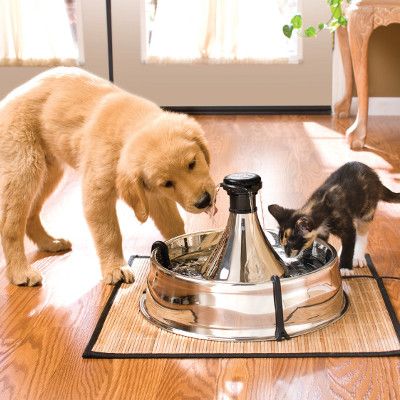 The key to getting two or more pets to make nice under the same roof -- even if that roof is that of the White House -- is socialization. McMillan says that critical socialization period is when pups should be introduced not only to people, but to cats, dogs and other animals as well.
The key to getting two or more pets to make nice under the same roof -- even if that roof is that of the White House -- is socialization. McMillan says that critical socialization period is when pups should be introduced not only to people, but to cats, dogs and other animals as well.
If you’re introducing more mature pets, “The most important thing is to do a slow introduction,” says McMillan. “Have your dog on a leash, then bring the cat into the room.” Associate good things with the cat, such as treats. If the dog starts to chase, give it a “time out,” restraining it on the leash in a room by itself.
One thing that presidents have learned over the years is that a canine companion can help soften their image.
President Herbert Hoover, who presided over the federal government during the Great Depression, had a German shepherd that was noted to be sullen and was often sulking around the White House. McLean says, “When they took a picture of Hoover with the dog, it made Hoover seem like a nice guy, when he actually had a cold demeanor.” Elizabeth Wasserman a Washington, D.C., area-based freelancer, has been writing about pets, among other topics, for more than 15 years. Her love of dogs, in particular, was handed down through the generations from her great-grandfather, Eric Knight, who wrote the book Lassie Come Home in the 1930s.

